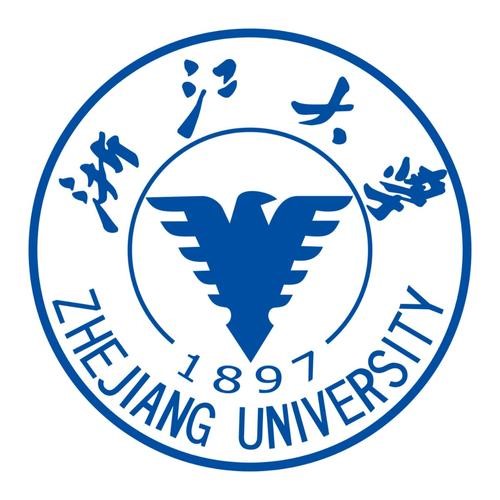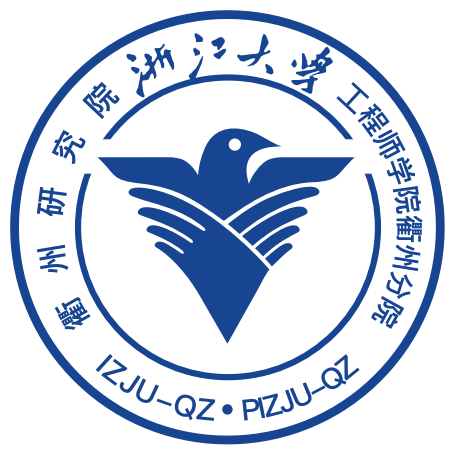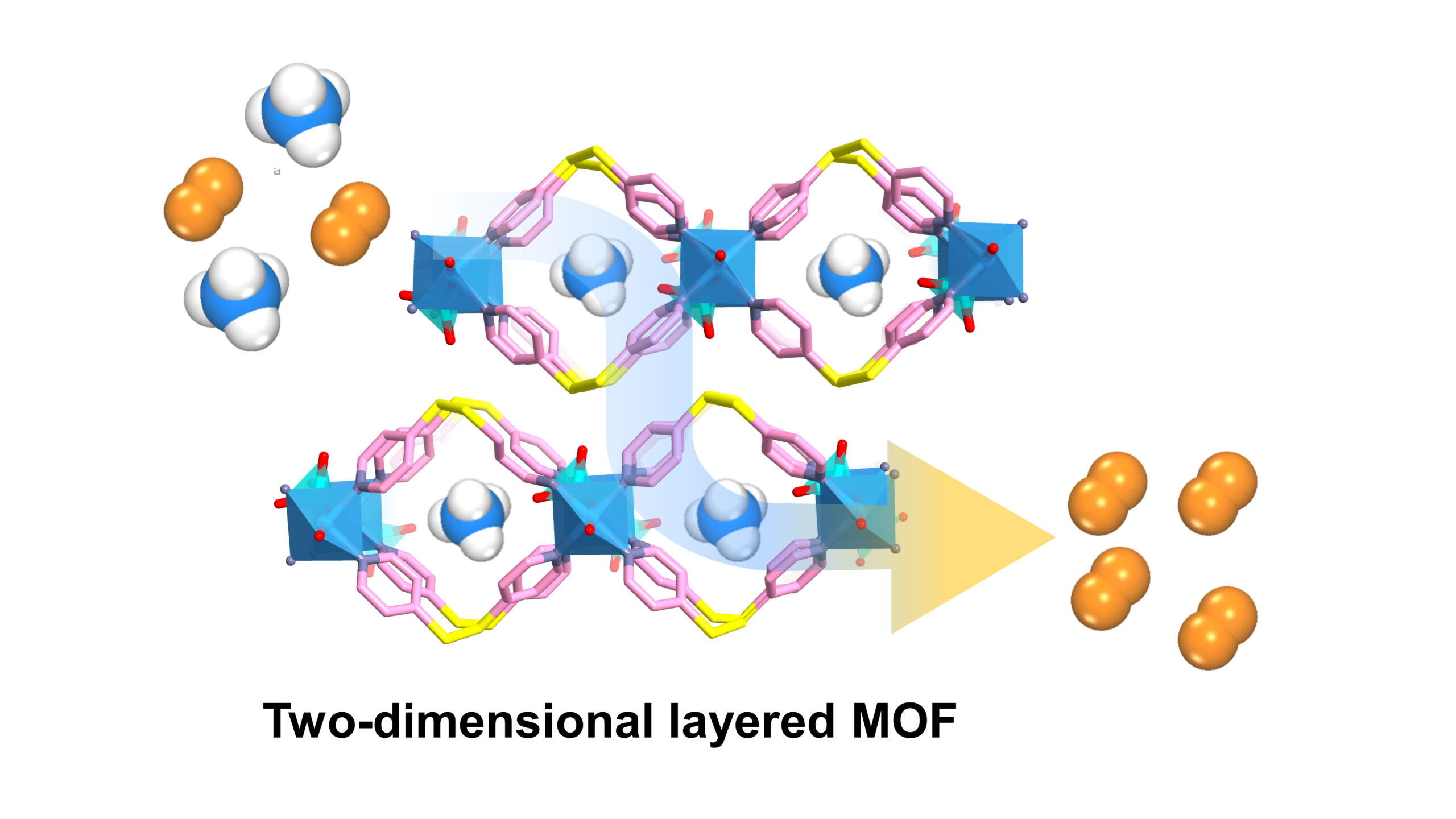Fang Zhenga, Lihang Chena, *, Rundao Chena, Zhiguo Zhanga, b, Qiwei Yanga, b, Yiwen Yanga, b, Baogen Sua, b, Qilong Rena, b, Zongbi Baoa, b, *
aKey Laboratory of Biomass Chemical Engineering of the Ministry of Education, College of Chemical and Biological Engineering, Zhejiang University, 38 Zheda Road, Hangzhou 310027, P. R. China.
bInstitute of Zhejiang University-Quzhou, Quzhou, 78 Jiuhua Boulevad North, Quzhou 32400, P. R. China.

 Selective capture and separation of methane (CH4) from nitrogen (N2) is a feasible approach to mitigate the effects of global warming and to improve the heating value of low-quality natural gas. However, the efficient separation of CH4/N2 is a challenge issue since their very close kinetic diameters and thermodynamic properties. In this work, we successfully combine twisted organic ligand (4-DPDS = 4,4’-dipyridyldisulfide) and angular inorganic anion (CrO42-) forming a new class of robust two-dimensional (2D) layered rhomboid grids with ionic polar environment. This a new type of 2D layered metal-organic framework (MOF) with permanent rhomboid pore channels, denoted as Ni(4-DPDS)2CrO4, was synthesized for the first time and used for CH4/N2 separation. Such a 2D layered material is rarely used for methane and nitrogen separation and shows high affinity towards CH4 thereby affording admirable methane adsorption and separation performance. Specifically, it not only performs high stability as outstanding as or even better than previously reported 3D MOFs but also exhibits a relatively high CH4 adsorption capacity of 0.95 mmol/g. Ni(4-DPDS)2CrO4 has a high affinity towards CH4 with the highest reported Qst value of 28.4 kJ/mol as well as a high CH4/N2 selectivity of 7.3, which is comparable to the state-of-the-art MOF materials reported so far.
Selective capture and separation of methane (CH4) from nitrogen (N2) is a feasible approach to mitigate the effects of global warming and to improve the heating value of low-quality natural gas. However, the efficient separation of CH4/N2 is a challenge issue since their very close kinetic diameters and thermodynamic properties. In this work, we successfully combine twisted organic ligand (4-DPDS = 4,4’-dipyridyldisulfide) and angular inorganic anion (CrO42-) forming a new class of robust two-dimensional (2D) layered rhomboid grids with ionic polar environment. This a new type of 2D layered metal-organic framework (MOF) with permanent rhomboid pore channels, denoted as Ni(4-DPDS)2CrO4, was synthesized for the first time and used for CH4/N2 separation. Such a 2D layered material is rarely used for methane and nitrogen separation and shows high affinity towards CH4 thereby affording admirable methane adsorption and separation performance. Specifically, it not only performs high stability as outstanding as or even better than previously reported 3D MOFs but also exhibits a relatively high CH4 adsorption capacity of 0.95 mmol/g. Ni(4-DPDS)2CrO4 has a high affinity towards CH4 with the highest reported Qst value of 28.4 kJ/mol as well as a high CH4/N2 selectivity of 7.3, which is comparable to the state-of-the-art MOF materials reported so far.
By DFT-D calculations, it was found that twisted organic ligand plays a vital role in delivering a relatively rigid structure and the angular inorganic anions provides polar sites for strong guest-host interactions in close proximity. It revealed the energy favorable binding sites for methane molecules are located in the middle of the cavity decorated with CrO42- anion, where inducing C-H···O hydrogen bond with the distance of 2.52 Å. Simultaneously, each adsorbed CH4 molecule is surrounded by eight pyridyl rings, among which one forms dominant cooperative supramolecular interactions between C(δ–) of CH4 and H(δ+) from the pyridyl ring (C···H = 3.43 Å) and moderate-to-weak σ···π stacking interactions between the electrons in the π orbitals of the pyridyl ring and the electrons in H of CH4 (H···pyridyl ring = 3.47 Å). Furthermore, the weak intermolecular electrostatic dipole interactions between the H(δ+) of CH4 and S (δ–) (H···S = 3.82 Å) are also observed. Such an angular inorganic anion provides a cooperative effect conferred by polar sites and multiple guest-host interactions in close proximity, affording tight binding affinity.

Dynamic breakthrough experiments were carried in a stainless-steel column manually packed with Ni(4-DPDS)2CrO4. The outlet gas passing through the column was analyzed using a Hiden HPR-20 EGA mass spectrometer for continuous sampling gas analysis. It certified N2 was eluted almost immediately and then quickly approached a pure grade while no detectable CH4, whereas CH4 was retained in the packed column for a remarkable time (~15 min) until reaching the saturated uptake and breakthrough. After the concentration of eluting gas remained unchanged, the amount of CH4 adsorbed into the column reached 0.94 mmol/g, with a selectivity of 4.7 to N2 (0.2 mmo/g), which suggest it is a promising material in natural gas purification by further regenerability tests. It is a thriving exploration in two-dimensional MOFs that will emerge the development of various materials for CH4 trap in the future.
Project summary by: Zongbi Bao, Key Laboratory of Biomass Chemical Engineering of the Ministry of Education, College of Chemical and Biological Engineering, Zhejiang University, 38 Zheda Road, Hangzhou 310027 P.R. China.
Paper Reference: “A robust two–dimensional layered metal–organic framework for efficient separation of methane from nitrogen” Separation and Purification Technology (2022) 281, 119911 https://doi.org/10.1016/j.seppur.2021.119911
Hiden Product: HPR-20 EGA
Reference: AP-HPR-20-202218
To find out more about these products visit the HPR-20 EGA product page or if you would like to contact us directly please Send us a Message.

